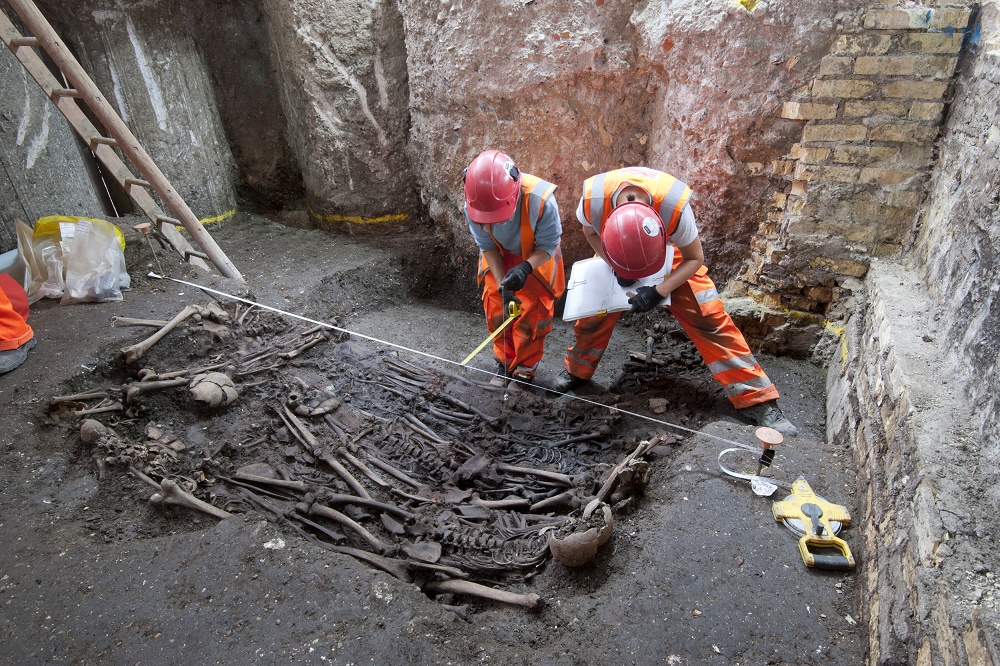Archaeologists in London believe they may have uncovered a mass grave of plague victims buried beneath one of the city's busiest train stations.

[Credit: Crossrail Project]
The find at Liverpool Street Station is part of one of Britain's most important archaeological digs, with a team of more than 60 scientists working double shifts since March to excavate around 3,000 skeletons.
The bodies were interred in a cemetery attached to the notorious Bedlam mental asylum, with the site being used for burials for at least 170 years.
The name Bedlam, the byname for the Bethlehem Royal Hospital, became synonymous with disorder and confusion and its horrific conditions struck fear into the heart of Londoners.

[Credit: Crossrail Project]
The burial ground was used from 1569 to the mid-19th century for Bedlam's patients and local residents when other cemeteries became overcrowded.
Beneath the burial ground lies a Roman road where archaeologists have also uncovered a selection of Roman graves.
Jay Carver, the lead archaeologist on the dig, said the potential plague pit within the cemetery contained at least 30 bodies.

[Credit: Crossrail Project]
He said the mass grave showed signs of being from the time of the great plague of 1665, in which more than 100,000 Londoners died.
"Well the clue is we're certainly in an area of the burial ground that was definitely in use in the 1660s. Thereby we found a small headstone dated in 1665," he said.
"The scientific tests we can do on some of these individuals should tell us what they've died of. If it's bubonic plague and we get some other evidence in terms of dating these layers, we could well have an example of a plague pit from that great plague episode."

[Credit: Crossrail Project]
The remains interred at Bedlam cover an era of civil wars, Shakespeare, the Great Fire of London and numerous plague outbreaks.
Many of those buried were poor and parish records listed them as servants and apprentices.
None were wearing clothes but several coffin plates found indicate there were some more well-off people buried at the site.
>Crossrail archaeology: 360° video of suspected 1665 plague pit uncovered> at Liverpool Street [Credit: Crossrail Project]
Mr Carver said many of the remains had been disturbed because the burial ground was so crowded.
"There's so many on the site though that they are all intercutting and very often the grave digger was cutting across the remains of some previous victim, so there's a lot of disturbance to all the graves," he said.
While some remains had obvious injuries like blows to the skull, most causes of death had to be established in a laboratory.

[Credit: Crossrail Project]
"There's a huge amount of work to wash and prepare each skeleton and then inspect it very carefully for injury and disease," he said.
"You can sometimes see very obviously when someone's suffered from an infectious disease like syphilis which has affected their bones, particularly their legs."
He said the archaeologists working on the dig had been moved by many of the stories of those who they had unearthed.

[Credit: Crossrail Project]
"We've seen burials here of mother and child, very young infants [who] probably died in childbirth in fact. It's extremely poignant to see that stuff," he said.
The remains were initially discovered as part of construction work at the station and so once they are excavated they will be re-buried on an island in the Thames.
Source: ABC News Website [August 14, 2015]